
© 2010-2023 by Fine Arts of the Southwest, Inc. All rights reserved.
Unauthorized reproduction or use is strictly prohibited by law.
A unique historic Hopi black-on-yellow
“seed” style low-profile pottery jar by Nampeyo,
c. 1900-1910
This is a unique and wonderful jar with an extraordinary and extremely low-profile shape. You can’t make a jar much lower than this and only the most skilled of potters such as the great Hopi pottery Matriarch, Nampeyo of Hano (1858-1942), would even attempt to make such a daring piece.
The antecedents for a piece such as this are in the prehistoric ancestral Hopi Kayenta type “flat-top” ceramic jars with no raised rims made in the Tsegi Canyon complex north of present day Hopi in the 13th and14th Centuries, “Tusayan Black-on-white” and “Keet Seel Polychrome” as shown below but Nampeyo took these shapes one giant step further lowering the jar;’s profile to an almost wafer-thin level. Shards of these prehistoric vessels as well as intact vessels are commonly found in the ruins of ancient Hopi villages of Sikyatki, Awatovi, Kokopynama and others where they were brought by ancestral Hopi migrating south to their present day Hopi mesa villages from the Tsegi Canyon complex. In fact, some years ago, one of our Hopi friends found a completely intact 14th Century Kayenta Flat top seed jar not far from their home. Nampeyo would have surely come across these Tsegi shards and/or vessels in her frequent explorations of these old ruined villages and clearly found artistic inspiration in them. These low-profile Nampeyo flat jar shapes, with or without rims, inspired by ancestral Hopi ceramics are sometimes referred to "flying saucers". The Fred Harvey Company fine arts department which sold quite a few of these pieces over the years called them "discs".
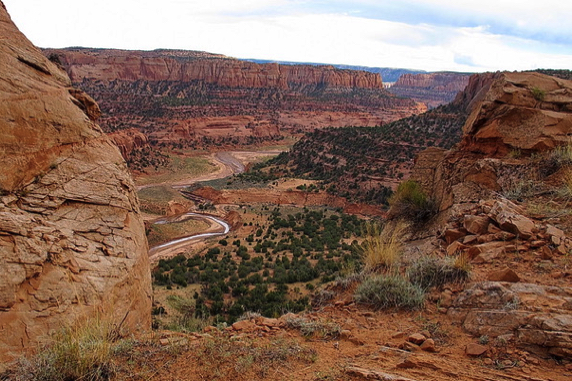
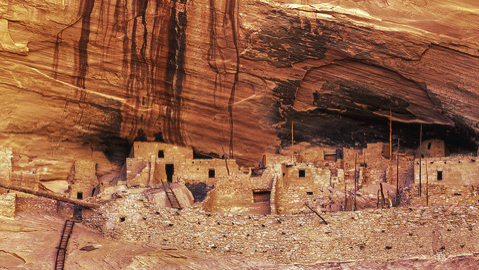
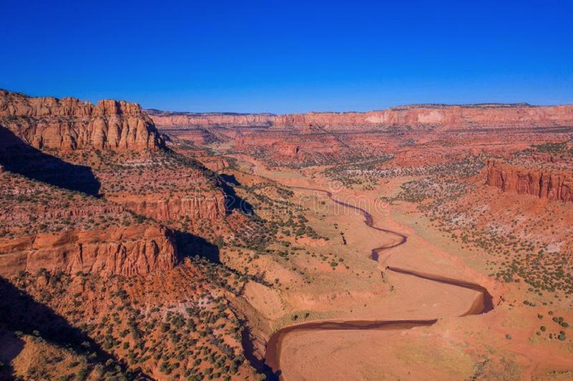
Tsegi Canyon
The remote Tsegi Canyon system in far Northern Arizona near the present-day Utah border is the ancestral home
of some modern-day Hopi clans who migrated southwards some 125 miles from the Tsegi area to the Hopi Mesas in the
13th and 14th centuries. The Tsegi Canyon system is home to the great ruined ancestral Pueblo villages of Betatakin,
Inscription House and Keet Seel which is pictured above at top center.
Top center photo of Keet Seel Ruin source and © Arizona Highways Magazine. Lower left photo source and © dreamstime. Lower right photo source and © Flickr.
Below, far left, near left and far right photo source and © "Anasazi Painted Pottery" by Paul S. Martin, originally published in 1940 by The Field Museum of Natural History, Chicago, IL and re-printed
by Ethnographic Arts Publications, Mill Valley, CA. Near right photo source and © "Painted Ceramics of the Western Mound of Awatovi" by Watson Smith, Peabody Museum, Harvard University, 1952.
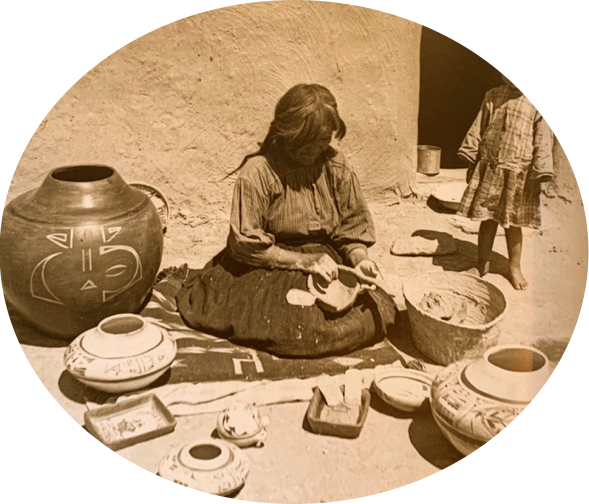
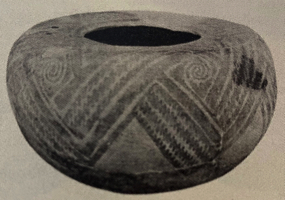
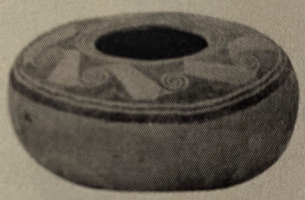
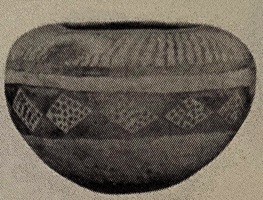
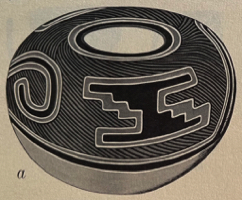
These low-profile type of flat jars are commonly called “seed” jars but that is more a prosaic term than an indication of any actual function. This jar is essentially a decorative sculptural piece made for the pure joy of making it than for any functional reason. Too, a small jar such as this would have been easily transportable back home by an early visitor to Hopi who came on the Santa Fe railroad and by Fred harvey touring car. At the turn if the 2oth century Hopi was experiencing a tourist boom due to the promotional efforts of the Santa Fe railway and the Fred Harvey Company and
a jar such as this would have bee a perfect “souvenir”. The marvelous condition of this 120 or so year old vessel is
a testament to how well this cherished memento was valued and cared for, essentially brought home and displayed on
a shelf or table for decades to come.
The design is quite spare, but fully indicative of Nampeyo’s design sensibility with the ultra-low form of the vessel very nicely accentuated by horizontally opposed paired symmetrical designs on the top incorporating stylized ears of corn emblematic of Nampeyo’s Hopi Corn clan of which she was the Matriarch and other motifs which resemble outstretched bird's wings. The jar also features her characteristic outstanding all-over stone polishing and the beautiful creamy
light yellow to orange firing clouds or "blushes" indicative of a high-temperature firing with Lignite coal, an ancient
Hopi pottery making technique which Nampeyo revived and used masterfully. Interestingly, the jar is done in Black-on-Yellow, there is no red paint at all in the design.
The jar measures 6 1/4" in diameter and is 2" in height. It is in generally excellent original condition particularly
for its 110-120 years of age with only a couple of minor scrapes and a tiny chip and a small amount of abrasion inside the rim and a 3-4" slip crack around the shoulder. A thorough examination of the vessel under Ultraviolet light
reveals no evidence at all of any restoration or overpainting.
This jar is a rare and unique prize from the talented hands and infinitely creative mind of one of Native America’s greatest-ever pottery artists, a piece to be valued and cherished for the next century to come and beyond.
Price $2,850
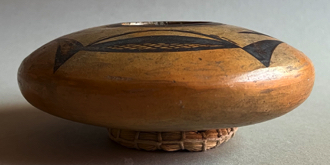
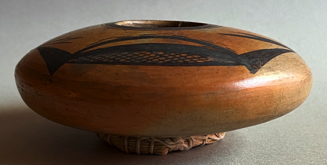
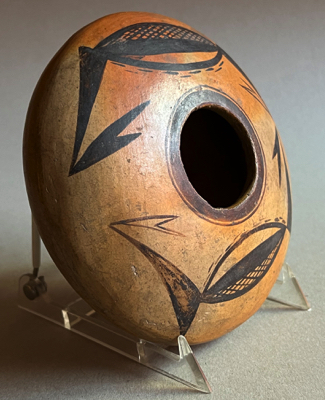
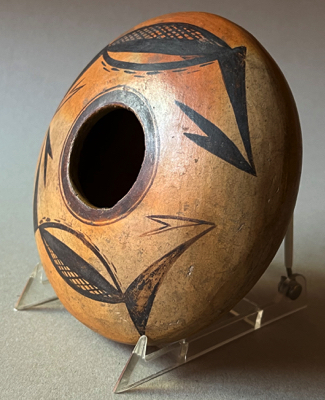
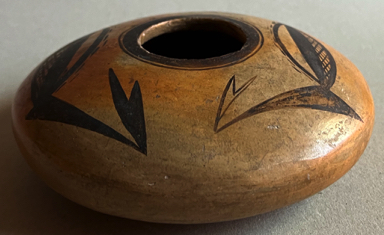
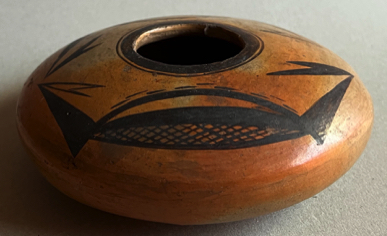
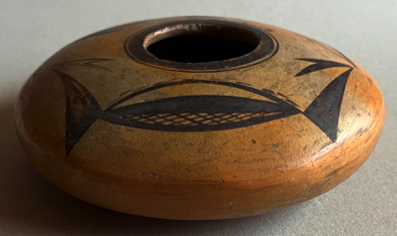
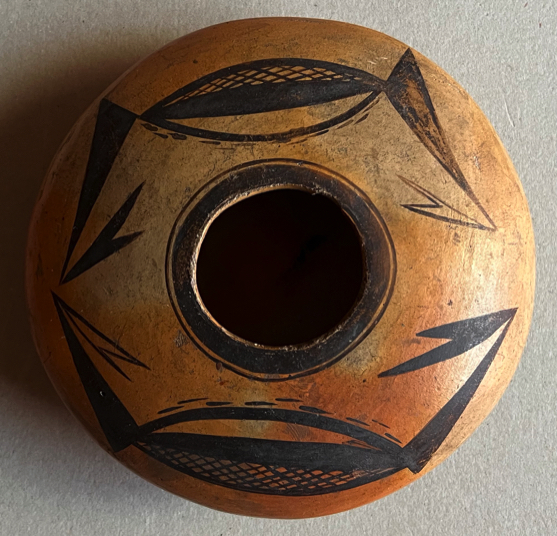
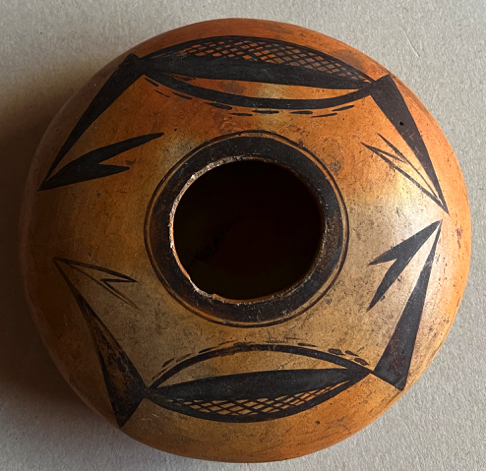
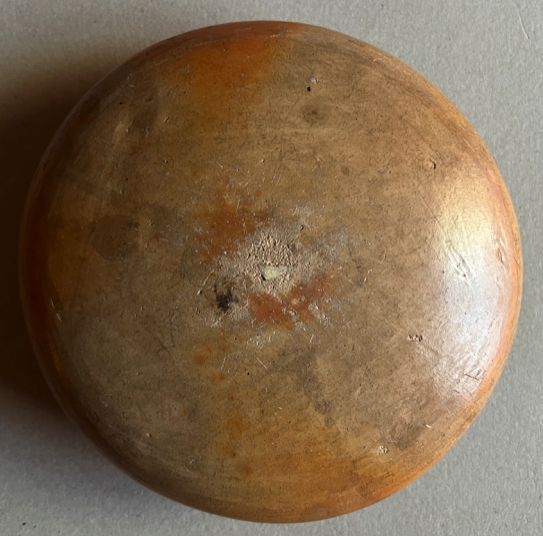
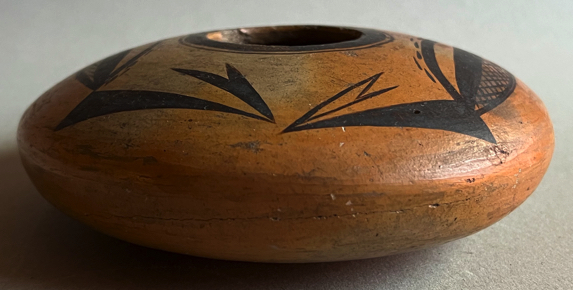
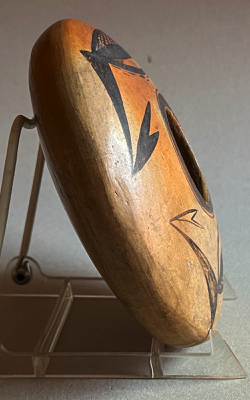
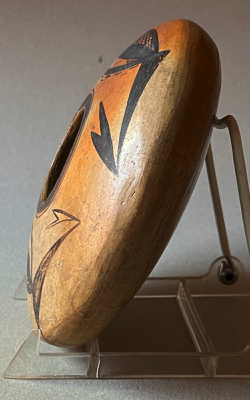
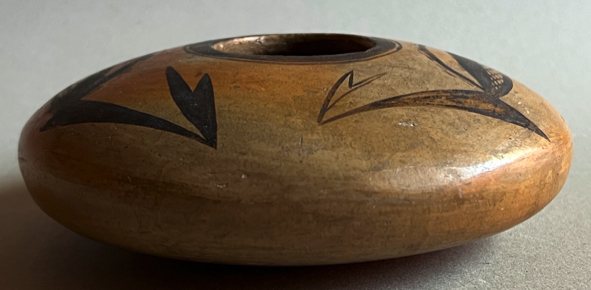
"Mrs. Nampeyo, an acknowledged best Hopi indian woman Pottery maker 1st Mesa Hopiland, Ariz. Sichomovi."
R. Raffius, 1905 photo source and © Keystone-Mast Collection, UCR/California
Museum of Photography, University of California, Riverside
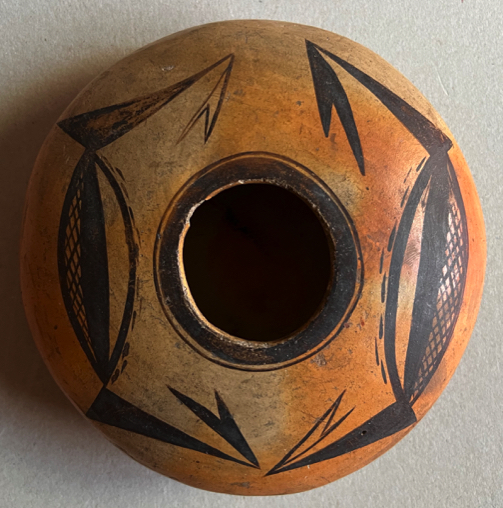
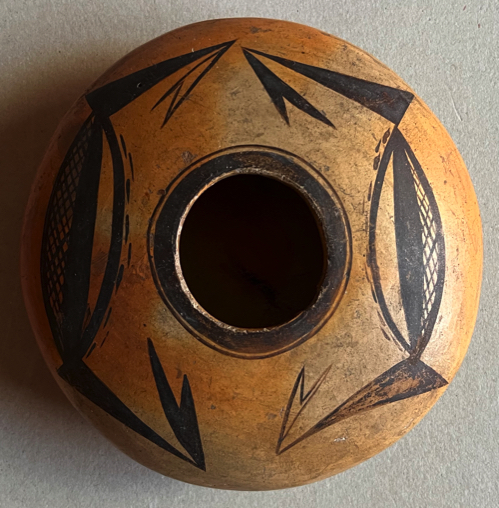
“When I first began to paint, I used to go to the ancient village and pick up
pieces of pottery and copy the designs. That is how I learned to paint. But now,
I just close my eyes and see designs and I paint them.”
-Nampeyo